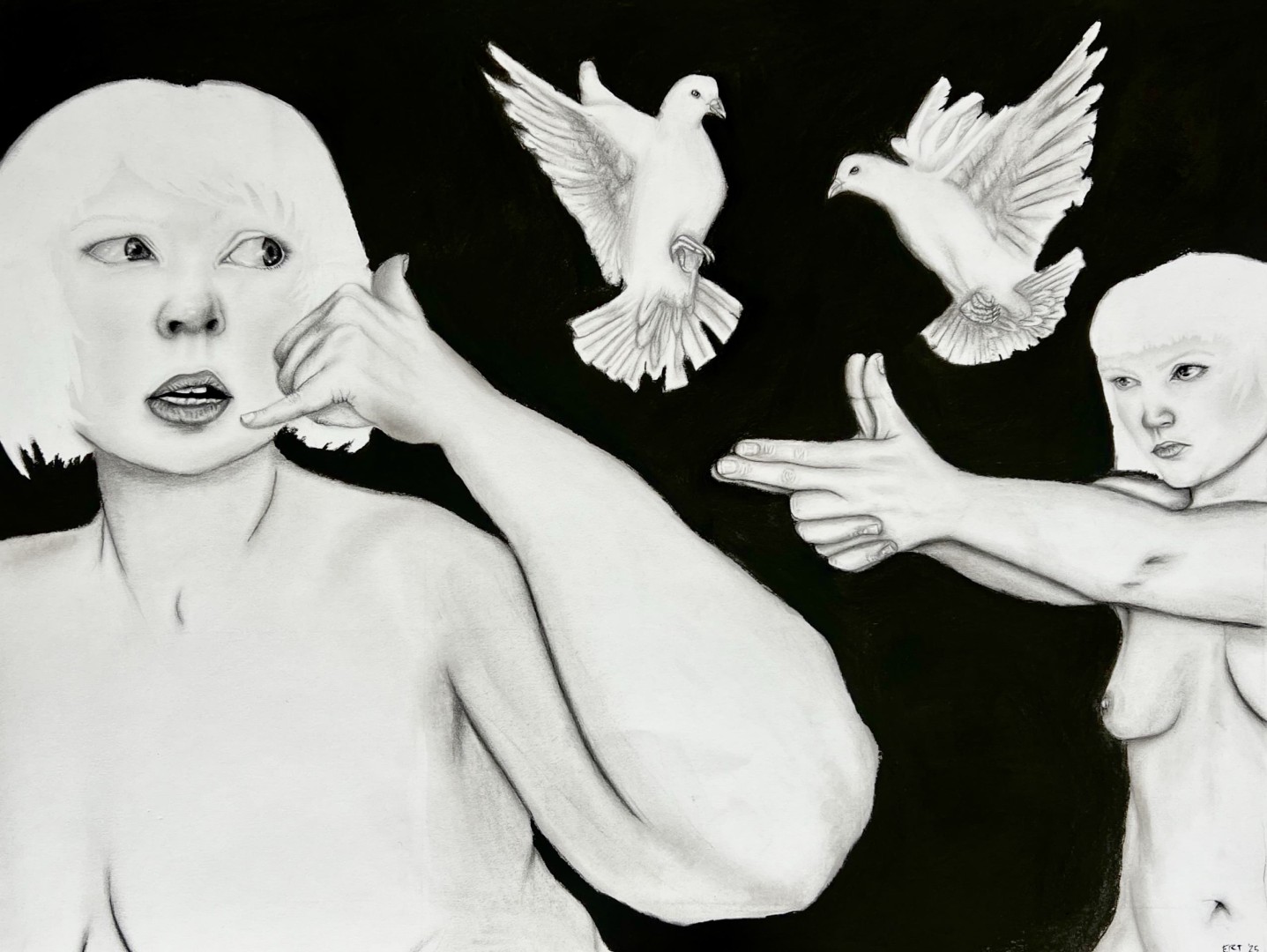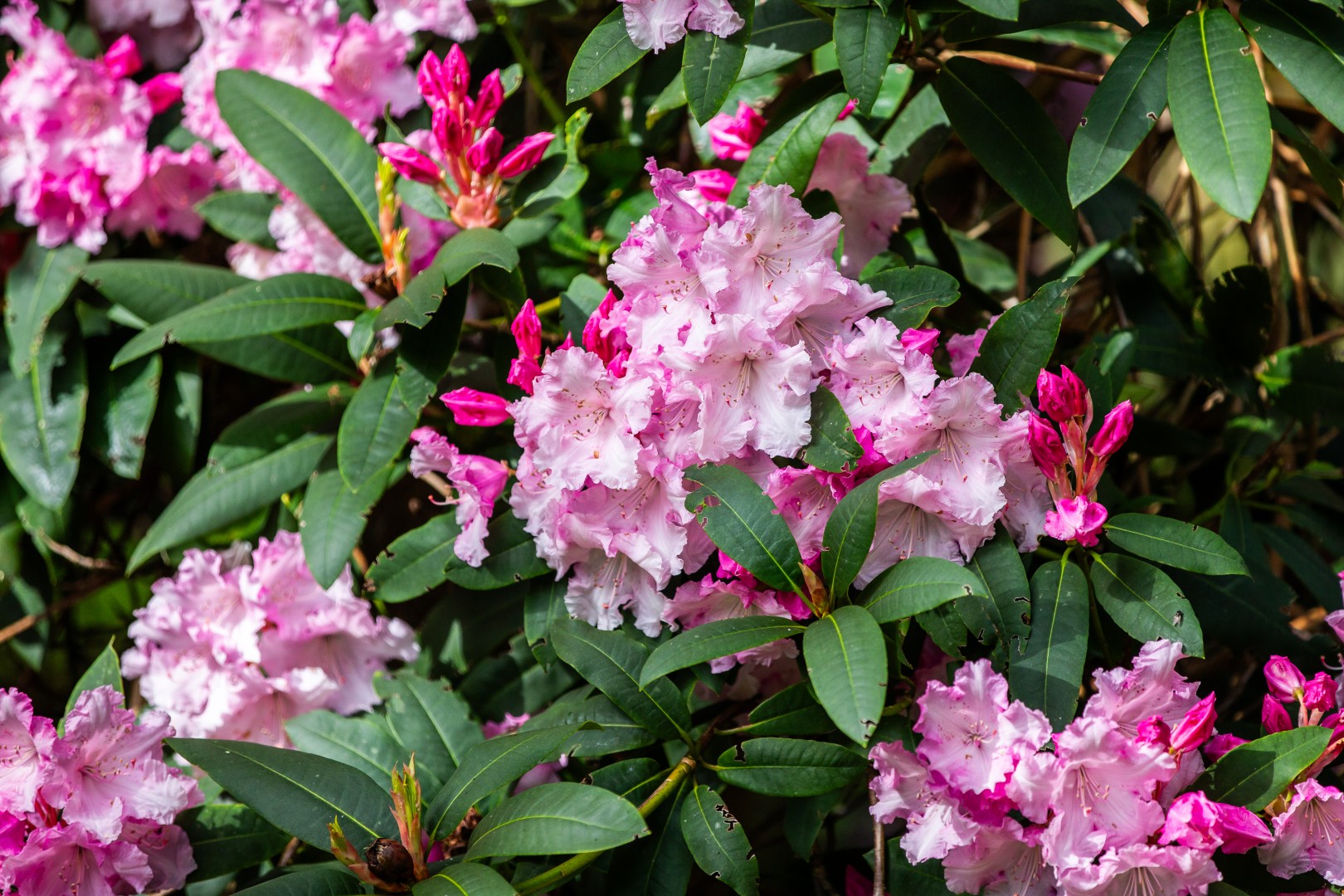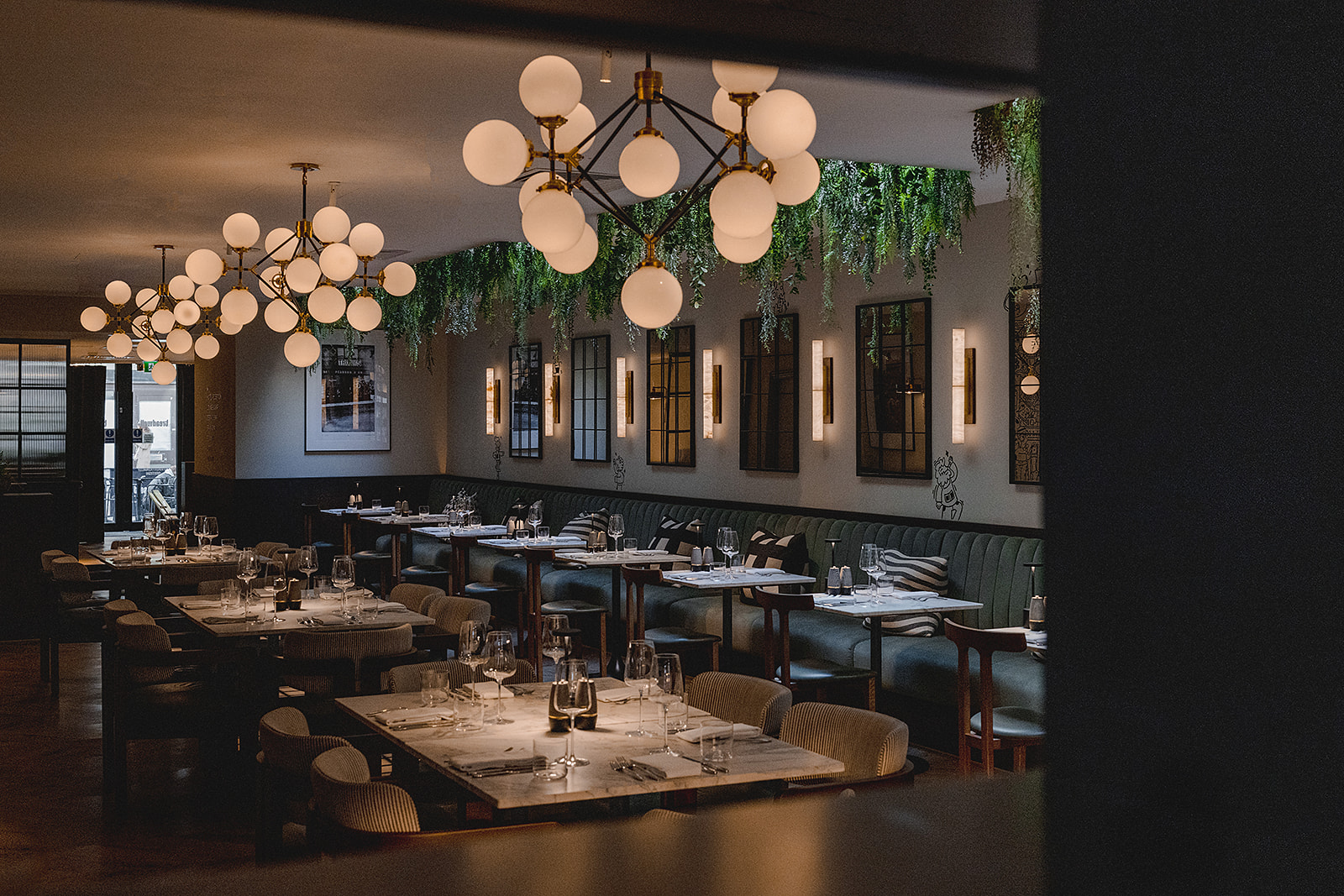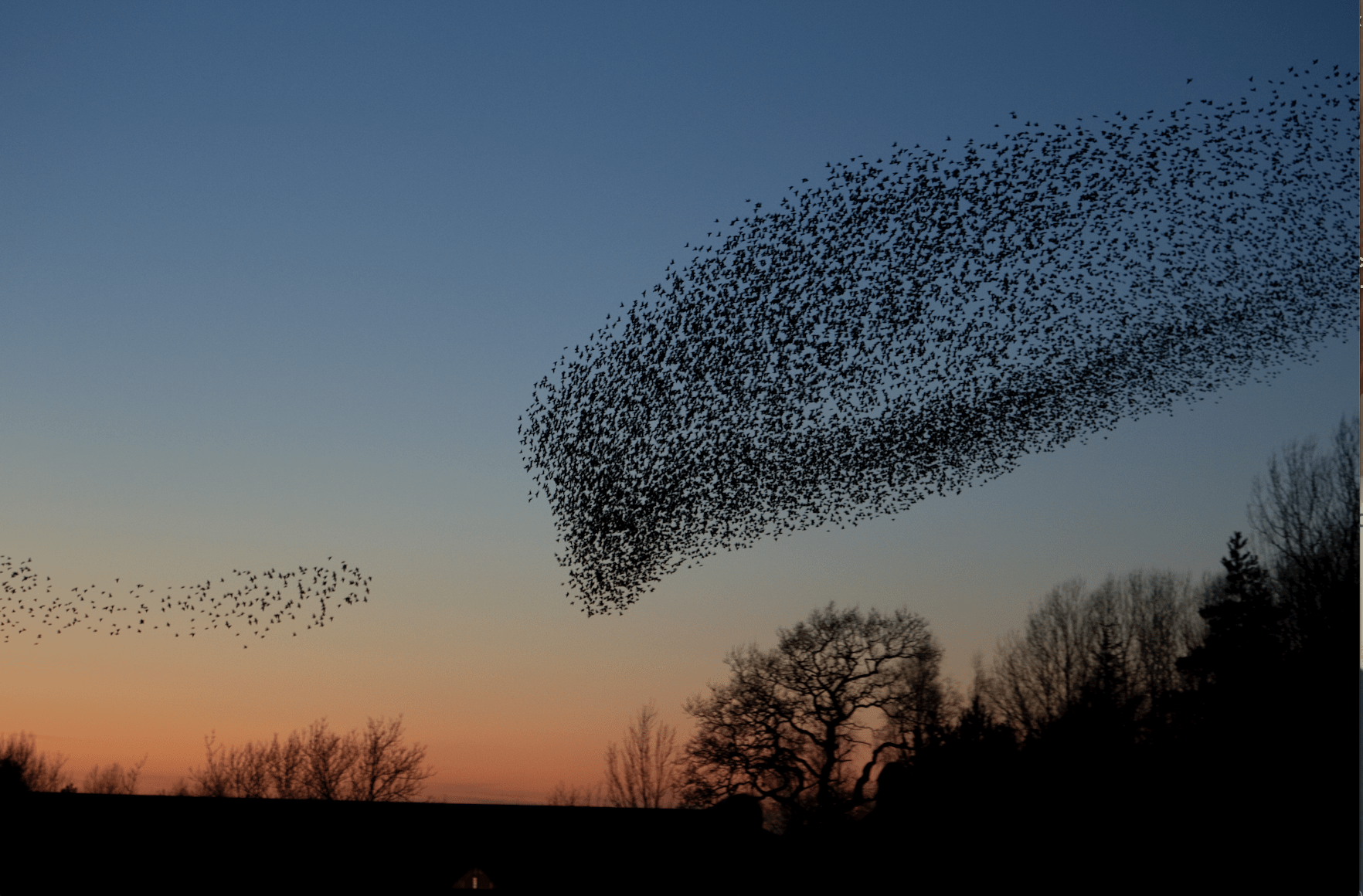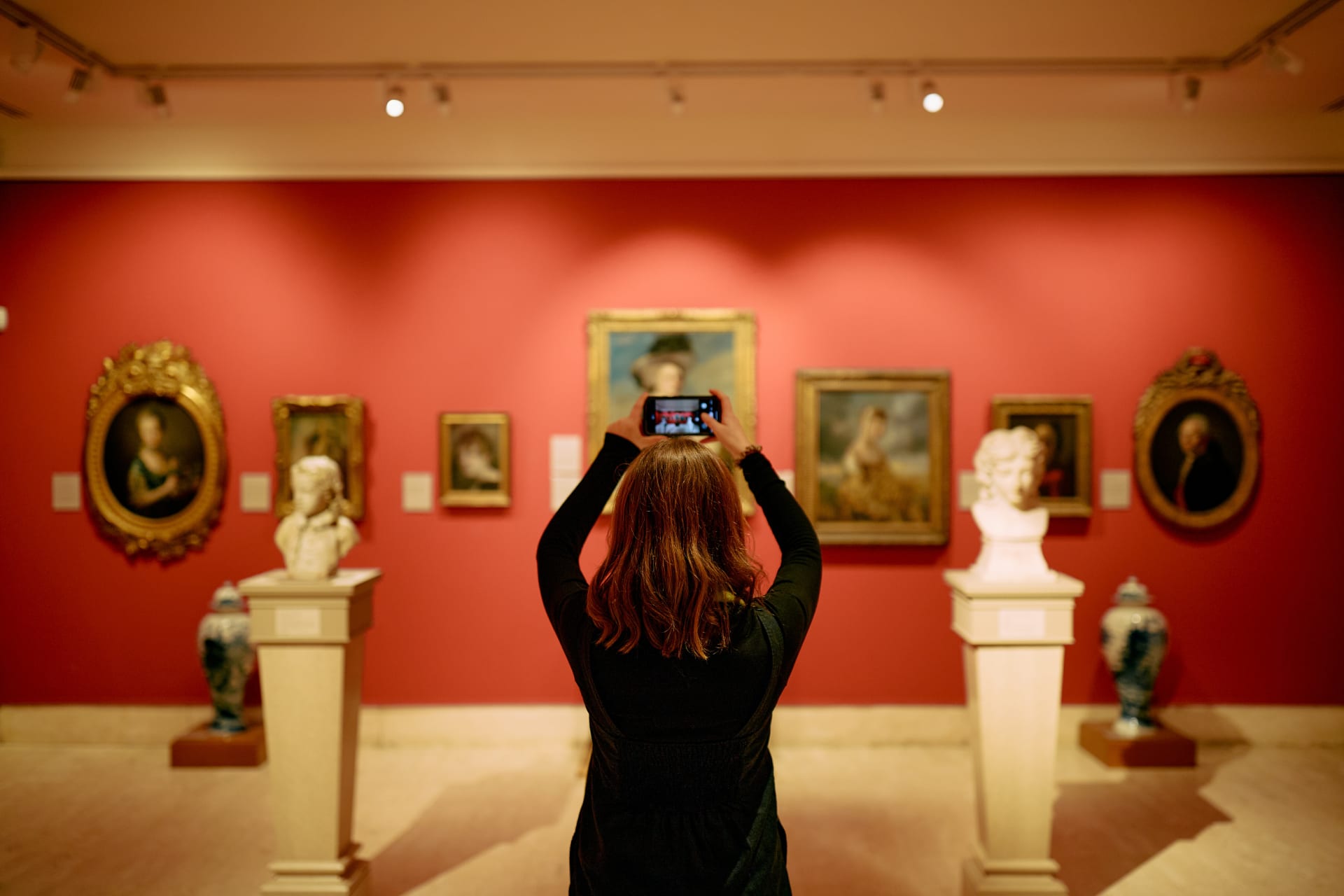Having burst onto the Oxfordshire art scene over the last year, winning the Ronapainting gallery prize at last year’s Oxford Art Society open exhibition, Erin Rosalie Thomas is delighted to be showing a collection of needle-felted works, prints and paintings at Sarah Wiseman Gallery for Oxfordshire Artweeks (venue 32). Festival Director, Esther Lafferty, met her to find out more about her inspiration and process.
“I’d always had an interest in textiles through my family and developed a love for fibre art post degree. The needle felting was a result of my mum’s work as an aesthetics nurse – when ordering treatments that needed to be temperature controlled, they would be packed in undyed sheep's wool. This was at a time where painting wasn’t feasible for me because I am quite a messy painter, which you can’t do in rented accommodation,” she laughs.
“I was very comfortable with felt as a medium and thought if I can't paint onto the canvas, why not needle felt onto it? I use the felt very much like I work with paint, layering as many as 15 different colours over one another to get the hues, shadows and saturation right. I’m most interested in showing the vulnerability of the figure in its natural state, so sheep’s wool fitted perfectly. I try to neutralise a lot of the colours I use, for example counteracting cadmium reds with green for balance, to capture the tonal values of skin.
I like the idea of capturing people in their natural, possibly vulnerable state, and have always been moved by the religious imagery of Eve in the Garden of Eden. Being from a female-led family (something I see as an incredible privilege), my idea of femininity was independence and strength, and I was always encouraged to have my own beliefs. I remember being surprised each time I was introduced to femininity as submissive, particularly in mass media ideals. In recent years, we’ve been introduced by concepts like micro-trends, which constantly rewrite the female narrative to an unachievable extent; I believe this is consuming our identities and we’re losing touch of our individuality as it indirectly feeds into bigger, more dangerous movements. I like to think my work celebrates that a feminine person can embrace independence and move past western ideals, but also illuminates a difficult conversation that needs to be had.”
Erin investigates the female figure as a politicised and conflicted place in the 21st century and illustrates tsituational space through body language, expression and object placement. And yet, she explains, while her characters are feminine, they aren’t gender specific, and whilst they have a human form, Erin sees each as the representation of a feeling or emotion, rather than figurative depictions. The characters’ body language suggests a narrative.
She has long been fascinated by people, human psychology and how we portray ourselves to the world. “I noticed early on that the way people behaved was a reflection of their surroundings and their upbringing, combined with their nature,” she remarks.
“I also include animals in my pieces because I am interested in modes of communication that don’t require words, and animals have that down to a tee. I have a lovely lurcher, Klaus and she is one of the most emotionally intelligent beings I've ever met in my life,” Erin smiles. “She knows when you're sad, she knows when you're happy, she knows when you're annoyed. But what I love most about animals is that they come with a total lack of baggage. As humans, our experiences shape who we are. Of course, animals have learnt behaviours that relate to their pasts, but they're not consumed by the same neuroses that humans are. And I love the medieval symbolisms of animals too – I find the mythical magical, and I am intrigued that a dog can symbolise both loyalty, eternal love and then also something as dark as death. In contrast, cats are so independent, and I enjoy juxtaposing the two.”
The exhibition title, This Too, Was A Gift refers to Mary Oliver's poem The Uses of Sorrow, a poem about the turning of anger and regret into acceptance and peace.
Humorous and symbolic, with the inclusion of fairy tales and animals teased into the narrative, the collection shows the complexities of being a young woman while presenting a positive outlook, subtle determination underpinning their expressions. And so, whilst her art investigates scenarios that cause deep emotional pain, she sees how they often change us for the better.
“In all negative situations,” she explains, “I believe great reward can follow as we develop more informed views of ourselves and others. This collection of work draws from a place of both personal and collective experience, as we witness a regressive shift in attitudes towards femininity.”
For more information on Oxfordshire Artweeks and the hundreds of artists and venues that will welcome you in, for free, visit artweeks.org

